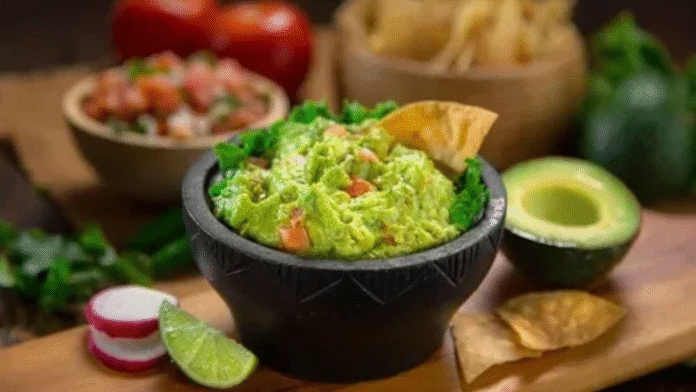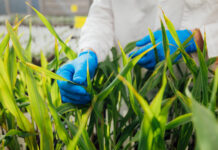Guacamole, once a humble party dip, has steadily made its way into everyday meals and mainstream menus worldwide. What was once reserved for tortilla chips during Super Bowl parties is now a staple topping for sandwiches, toast, salads, and even sushi rolls. The evolution of guacamole consumption mirrors broader shifts in consumer behavior, health consciousness, and global food trends.
According to Persistence Market Research, this transformation reflects not only changing eating habits but also the dynamic growth of the guacamole market driven by increasing demand for nutritious and flavorful food options.
Ancient Roots, Global Rise
Guacamole has a rich history, rooted in the ancient civilizations of Central America. The Aztecs are credited with first creating the avocado-based dip, traditionally prepared with mashed avocados, lime, salt, and sometimes chili peppers and tomatoes. For centuries, it remained a regional delicacy, primarily consumed in Mexico and nearby Latin American countries.
With the rise of Mexican cuisine in North America during the 20th century, guacamole began to gain international traction. Initially limited to Mexican restaurants and niche grocery stores, its popularity exploded with the global boom in interest around international flavors.
When Avocados Went Viral
The rise of the avocado in global diets played a central role in boosting guacamole’s popularity. Touted as a superfood, avocados are rich in healthy fats, vitamins, fiber, and antioxidants. As health-conscious consumers increasingly sought out nutrient-dense foods, guacamole became a delicious and accessible way to enjoy avocados.
This wellness wave was further accelerated by social media platforms like Instagram and Pinterest, where avocado toast and guacamole bowls became visual and viral sensations. The shift from dip to dietary staple was driven in part by this cultural endorsement.
According to Persistence Market Research, this superfood trend significantly impacted the guacamole market, leading to a surge in demand across foodservice outlets, quick-service restaurants, and home kitchens.
Beyond the Bowl: Guacamole’s Culinary Reinvention
Today, guacamole is no longer confined to the appetizer section. It has evolved into a multifunctional food item that adds flavor, nutrition, and visual appeal to a variety of dishes. From burger toppings to breakfast wraps, and from grain bowls to vegan tacos, guacamole’s applications are seemingly endless.
Restaurants and food brands have responded by incorporating guacamole into diverse offerings. Fast-casual giants like Chipotle and Subway prominently feature guacamole as a customizable add-on, further embedding it into everyday diets.
This mainstream adoption has redefined guacamole from a “sometimes snack” to a regular grocery list item. Ready-to-eat guacamole, available in tubs or squeeze packs, has become a refrigerator essential for health-conscious, on-the-go consumers.
Keeping It Fresh: The Role of Innovation
One major contributor to the rise of guacamole as a staple is innovation in packaging and shelf-life extension. Traditionally, guacamole’s biggest drawback was its short shelf life due to oxidation, which causes discoloration and loss of flavor.
However, food manufacturers have tackled this challenge with high-pressure processing (HPP), vacuum-sealing technologies, and clean-label preservatives. These advancements help extend freshness without compromising on taste or nutrition.
Persistence Market Research notes that technological innovation has allowed producers to reach a broader audience and reduce food waste, enhancing product appeal across retail and foodservice segments. As a result, both premium and private-label brands have flourished in the guacamole market.
Going Global with a Local Twist
While guacamole’s roots are in the Americas, its global appeal continues to expand. In Europe and Asia, where avocado consumption has been relatively limited, guacamole is now being embraced in both traditional and fusion cuisines.
In markets like Japan and South Korea, guacamole is being paired with sushi, rice bowls, and savory pancakes. In the UK and Germany, it has found a home in brunch menus and gourmet snack packs.
This growing international demand reflects broader trends in global food consumption, where authenticity, health, and convenience intersect. Persistence Market Research reports increasing investments by international food brands to localize and market guacamole products that align with regional palates.
Clean, Green, and On the Scene
Modern consumers are increasingly conscious of what goes into their food. This shift toward clean labels and organic ingredients is shaping product development in the guacamole space. Brands are now marketing guacamole that is free from artificial additives, preservatives, and added sugars.
Moreover, organic and sustainably sourced avocados are gaining traction, particularly among millennials and Gen Z shoppers who prioritize transparency and ethical sourcing. These evolving preferences are driving innovation in the guacamole market, from plant-based recipes to all-natural ingredient formulations.
Click, Order, Dip: The E-Commerce Influence
The digital shift in grocery shopping has also played a critical role in guacamole’s rise to staple status. With the surge in online grocery platforms, ready-to-eat guacamole products have become widely accessible to consumers who prefer the convenience of home delivery.
Additionally, the meal kit industry has embraced guacamole as a ready-to-use ingredient, offering fresh dips in DIY taco kits, burrito bowls, and health-focused meal subscriptions.
Persistence Market Research highlights that direct-to-consumer models and online distribution channels are opening new avenues for guacamole producers, making the product a consistent part of weekly meal planning.
Sustainable Snacking: A New Chapter
As with many food products, sustainability is becoming a key consideration in guacamole production. Avocados require substantial water resources, and environmental concerns around large-scale avocado farming are becoming more prominent.
In response, some brands are exploring sustainable sourcing certifications, water-efficient farming methods, and even avocado alternatives made from peas, fava beans, or broccoli to create “eco-friendly guacamole.”
Looking ahead, sustainability efforts will be essential to maintaining the growth trajectory of the guacamole market, ensuring long-term viability while meeting consumer expectations for responsible production.
Final Scoop: More Than a Dip
From a ceremonial dish of ancient Aztecs to a global dietary staple, guacamole has truly undergone a remarkable transformation. Its rise reflects broader shifts in global food culture—where flavor, function, health, and ethics combine to shape what ends up on our plates.
Thanks to innovations in technology, packaging, and supply chains—and propelled by changing consumer preferences—guacamole has cemented its place not just as a beloved dip, but as a daily essential.
As Persistence Market Research continues to analyze evolving consumer trends and market dynamics, it is clear that the journey of guacamole is far from over. With growing global adoption and ongoing product innovation, guacamole has not just dipped into our diets—it has taken a firm hold.









